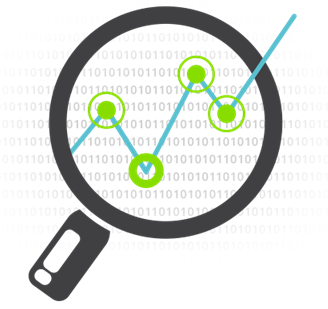

این دوره برای کسانی که قصد دارند تحلیلگر حرفهای شبکه باشند، ضروری است. با گذراندن این دوره میآموزید که جزئیترین و دقیقترین رخدادهای شبکه را تحت کنترل داشته باشید و عیبیابی و تجزیه و تحلیلهای شبکه را به صورت حرفهای اجرا و مدیریت کنید.
دوره آنالیز پکتهای شبکه توسط تیم تخصصی و اساتید حرفهای گروه لیان با بهرهگیری از بهروزترین و باکیفیتترین دورههای بینالمللی تهیه و تدوین شده است. در این دوره به صورت قدم به قدم با مفاهیم شبکه و ماهیت و ساختار پکتها آشنا میشوید و دربارهی زیرساخت لایهای شبکه و پروتکلهای انتقال دیتا به طور کامل میآموزید. در ادامه ابزارهای تجزیه و تحلیل پکتهای شبکه، از جمله Wireshark، Scapy و Snort به شما معرفی میشوند.
این دوره در کنار ارائه مطالب تئوری، با یک سناریوی عملی بسیار مهم و کاربردی به پایان میرسد تا دانش ارائه شده در دوره تثبیت شده و اطمینان حاصل گردد که دانشجویان با کسب مهارتهای عملی برای رویارویی و رفع انواع مشکلات آماده شده باشند.

این دوره برای کسانی که قصد دارند تحلیلگر حرفهای شبکه باشند، ضروری است. با گذراندن این دوره میآموزید که جزئیترین و دقیقترین رخدادهای شبکه را تحت کنترل داشته باشید و عیبیابی و تجزیه و تحلیلهای شبکه را به صورت حرفهای اجرا و مدیریت کنید.
دوره آنالیز پکتهای شبکه توسط تیم تخصصی و اساتید حرفهای گروه لیان با بهرهگیری از بهروزترین و باکیفیتترین دورههای بینالمللی تهیه و تدوین شده است. در این دوره به صورت قدم به قدم با مفاهیم شبکه و ماهیت و ساختار پکتها آشنا میشوید و دربارهی زیرساخت لایهای شبکه و پروتکلهای انتقال دیتا به طور کامل میآموزید. در ادامه ابزارهای تجزیه و تحلیل پکتهای شبکه، از جمله Wireshark، Scapy و Snort به شما معرفی میشوند.
این دوره در کنار ارائه مطالب تئوری، با یک سناریوی عملی بسیار مهم و کاربردی به پایان میرسد تا دانش ارائه شده در دوره تثبیت شده و اطمینان حاصل گردد که دانشجویان با کسب مهارتهای عملی برای رویارویی و رفع انواع مشکلات آماده شده باشند.


به افرادی که علاقهمند به گذراندن این دوره هستند، توصیه میشود که ابتدا بر مفاهیم پایهای حوزههای شبکه و امنیت تسلط داشته یا دورههای Network + و CCNA و Security+ را گذرانده باشند.
به افرادی که علاقهمند به گذراندن این دوره هستند، توصیه میشود که ابتدا بر مفاهیم پایهای حوزههای شبکه و امنیت تسلط داشته یا دورههای Network + و CCNA و Security+ را گذرانده باشند.
کارشناسان شبکه و امنیت پس از گذراندن این دوره، دو مهارت کلیدی زیر در مانیتورینگ شبکه را به دست خواهند آورد:
کارشناسان شبکه و امنیت پس از گذراندن این دوره، دو مهارت کلیدی زیر در مانیتورینگ شبکه را به دست خواهند آورد:
مخاطبین اصلی این دوره، کارشناسان و مدیران IT و متخصصان و مدیران شبکه سازمانها هستند که قصد دارند شبکه را به طور دقیق عیبیابی و آنالیز کنند، پروتکلهای موجود را توسعه و مشکلات عملکردی شبکه را کاهش دهند.
مخاطبین اصلی این دوره، کارشناسان و مدیران IT و متخصصان و مدیران شبکه سازمانها هستند که قصد دارند شبکه را به طور دقیق عیبیابی و آنالیز کنند، پروتکلهای موجود را توسعه و مشکلات عملکردی شبکه را کاهش دهند.
